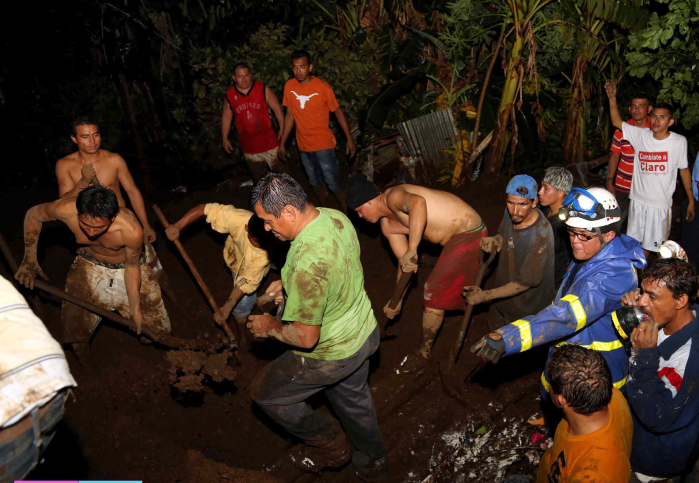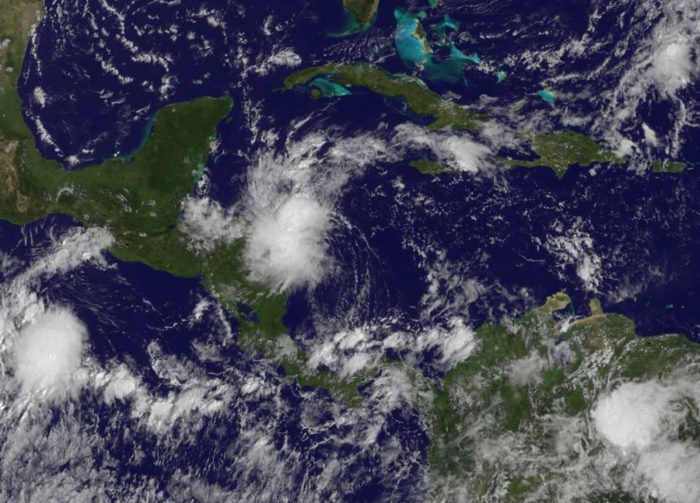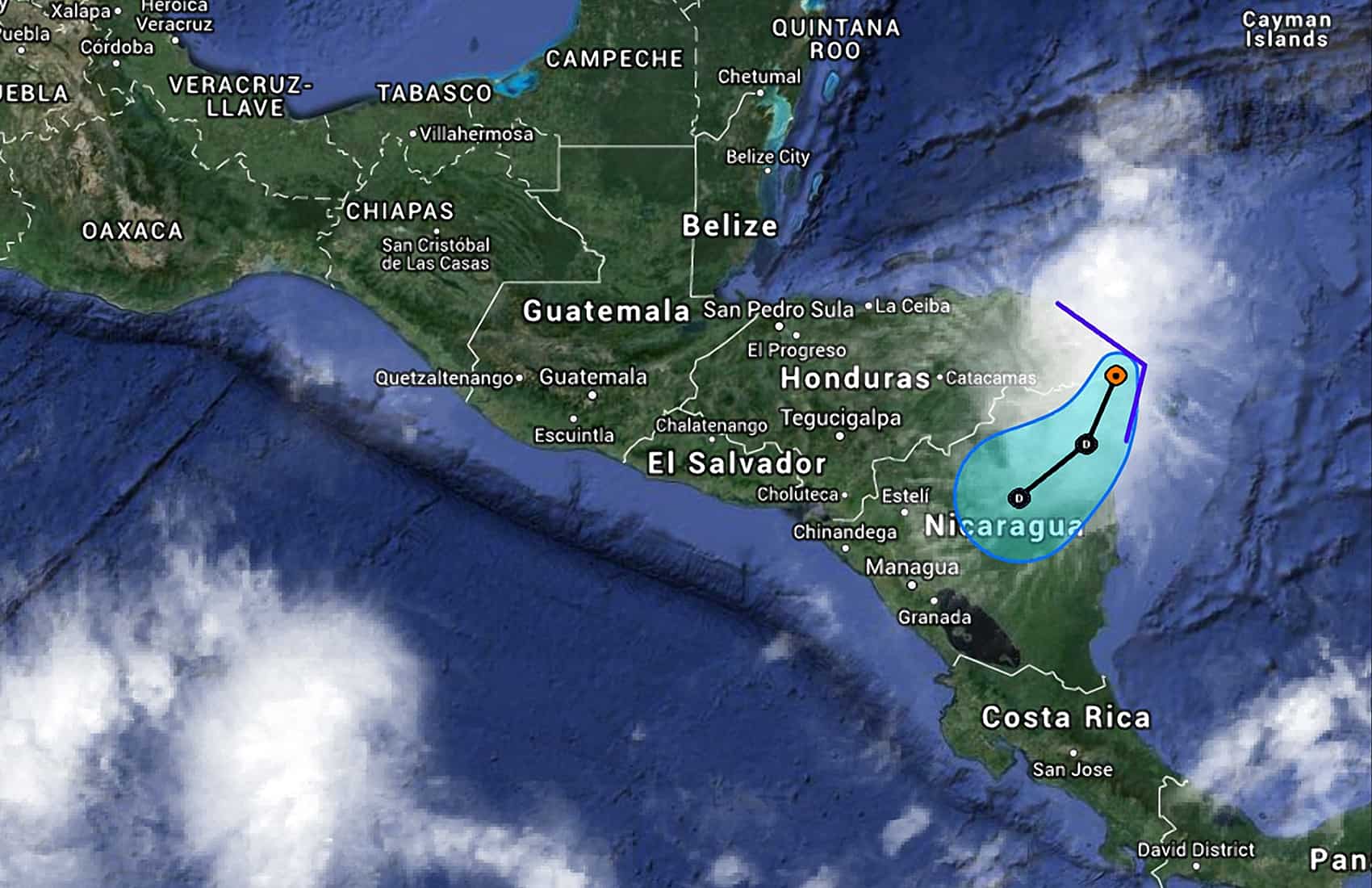UPDATE, Tuesday, 00:10:
MANAGUA, Nicaragua – Downgraded to a tropical depression, Hanna on Monday lashed northeastern Nicaragua and eastern Honduras, unleashing heavy rains that U.S. forecasters warned could cause deadly flash-flooding.
Though slightly weaker and downgraded from tropical storm status, Hanna still could drench much of Honduras and northern Nicaragua with up to 38 centimeters (15 inches) of rain, according to the Miami-based National Hurricane Center.
“These rainfall amounts will produce life-threatening flash floods and mudslides,” the NHC cautioned at 0001 GMT on Tuesday.
Hanna, with top winds of 55 kilometers (35 miles) per hour, was forecast to move quickly inland and bring downpours to the region.
While heavy rains might sound like good news for parts of Honduras that have been experiencing drought, the dry conditions actually make the terrain in mountainous Central America more prone to mudslides.
And elsewhere in Honduras and in Nicaragua, the rainy season has saturated the soil, causing rivers and streams to overflow easily and triggering landslides on the slopes of volcanoes and mountainous areas across the countries.
Original story continues here:
MANAGUA, Nicaragua – Nicaragua and Honduras are bracing for severe weather Monday after Tropical Storm Hanna formed off the Caribbean coast. Hanna, with top winds of 65 kilometers (40 miles) per hour, was forecast to move quickly inland and produce heavy rainfall, the U.S. National Hurricane Center said.
At 12 p.m. (1800 GMT), the storm system was located about 40 kilometers (25 miles) west-southwest of Cabo Gracias a Dios on Nicaragua’s border with Honduras.
The Miami-based NHC issued a tropical storm warning for the area between Punta Patuca, Honduras to Puerto Cabezas, Nicaragua, which could expect heavy rains and high winds by 7 p.m. (0100 GMT).
The forecasters said parts of both countries were already being drenched.
“Hanna producing heavy rains over eastern Honduras and northeastern Nicaragua,” the NHC reported.
The storm was moving west at 11 kilometers (seven miles) per hour and was expected to move further inland over northeastern Nicaragua on Tuesday.

Nicaragua issued a yellow alert, allowing civil defense agencies to take preventive measures to safeguard the population.
The national disaster prevention agency SINAPRED urged people to remain calm and follow official guidance on the storm.
“They are taking the necessary steps to safeguard the lives of people and their property,” meteorology chief Marcio Baca told Radio Ya.
Hanna could produce up to 15 inches (38 centimeters) of rain across Honduras and northern Nicaragua, according to the NHC.
Heavy rains that have lashed the country since October 9 have left 28 people dead, displacing or otherwise affecting more than 60,645 people and damaging 6,214 homes.
The rainy season has saturated the soil, causing rivers and streams to overflow and triggering landslides on the slopes of volcanoes and mountainous areas across the country.
Meanwhile, Costa Rica’s National Meteorological Institute (IMN) on Monday afternoon ruled out that Hanna would have severe consequences in Costa Rica, according to IMN meteorologist Eladio Solano.
Solano said normal rainy season conditions would continue here, with intermitent showers mostly in mountainous areas. Intermitent rains and cloudy skies also will occur in the Central Valley and the South and Central Pacific regions.


